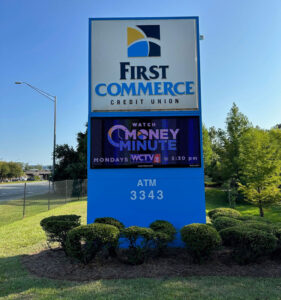 For sign manufacturers and installers, safety is paramount. Not only does it protect your employees and customers, but it also ensures your work meets code and avoids costly rework. In the world of electrical signage, the National Fire Protection Association’s 70, or NFPA 70 (National Electrical Code) is the gold standard. This article dives into the key aspects of NFPA 70 that sign companies need to understand.
For sign manufacturers and installers, safety is paramount. Not only does it protect your employees and customers, but it also ensures your work meets code and avoids costly rework. In the world of electrical signage, the National Fire Protection Association’s 70, or NFPA 70 (National Electrical Code) is the gold standard. This article dives into the key aspects of NFPA 70 that sign companies need to understand.
Understanding the NEC:
The NEC is a comprehensive document outlining safe electrical practices for installations. While not a federal law, it’s typically adopted by states and municipalities, ensuring consistent electrical safety regulations across the country. It’s important to note that localities may have amendments or variations, so staying informed about your specific jurisdiction’s adopted version is crucial. The latest edition, NFPA 70-2023, was released in August 2022.
NFPA 70 and Electric Signs: Your Chapter
Article 600 of the NEC focuses specifically on “Electric Signs and Outline Lighting.” This section details requirements for various aspects of sign construction and installation, including:
- Wiring: The NEC dictates proper wire sizing, types (e.g., grounded, conductor), and installation methods (raceways, enclosures) to ensure safe current carrying capacity and protection from physical damage.
- Transformers: Step-down transformers are often used in signs. The NEC specifies transformer selection based on load requirements and grounding procedures.
- Signs with Motors or Flashers: For signs with moving parts or flashing mechanisms, the NEC outlines motor and flasher safety considerations, including grounding and overload protection.
- Grounding and Bonding: Proper grounding is essential for electrical safety. The NEC details grounding requirements for sign structures, metal components, and electrical enclosures to prevent shock hazards.
- Disconnects: Disconnects allow for safe electrical isolation during servicing. The NEC specifies the location and type of disconnect switches required for signs.
- Luminaires and Ballasts: The NEC covers luminaires (light fixtures) and ballasts (regulating devices) used in signs, addressing issues like lamp types, ballast compatibility, and proper mounting.
Beyond the Basics
NFPA 70 goes beyond these core elements. It also covers:
- Wet Locations: Signs exposed to rain or other moisture require additional considerations for weatherproofing and corrosion resistance.
- Hazardous Locations: For signs in areas with flammable materials or vapors, the NEC outlines specific wiring methods and equipment types to minimize explosion risks.
- Listing and Labeling: The NEC emphasizes using electrical components that are “listed” (evaluated for safety) and “labeled” (identified for specific use) by a Nationally Recognized Testing Laboratory (NRTL).
Staying Compliant: Working with a Master Electrician
While the NEC provides a framework, its intricacies can be challenging to navigate. For sign companies, partnering with a qualified Master Electrician is highly recommended. Master Electricians understand the NEC and can ensure your signs are designed, manufactured, and installed according to code. They can also perform the final electrical inspections required by most jurisdictions before a sign is energized.
Conclusion
NFPA 70 empowers sign companies to create dazzling displays while prioritizing safety. By familiarizing yourself with the key elements of Article 600 and partnering with a qualified electrician, you can ensure your business operates in compliance and delivers high-quality, safe signage for your clients. Remember, the NEC is a continually evolving document, so staying updated on the latest revisions is essential for continued compliance.
Additional Resources:
- National Fire Protection Association (NFPA): https://www.nfpa.org/en
- International Sign Association (ISA): https://signs.org/






